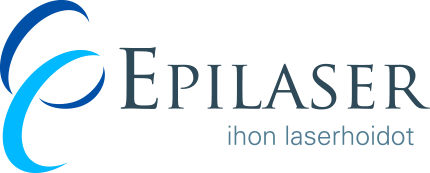What types of skin growths can be removed by laser?
Laser therapy can be used to remove skin growths, which a dermatologist can diagnose as benign on the basis of their appearance. These include, for example, intradermal nevi, sebaceous hyperplasia, seborrheic keratosis, skin tags (fibroma molle) and cholesterol deposits, i.e. xanthelasma.
How does laser remove skin growths?
Laser therapy removes skin growths precisely without damaging surrounding tissues. The laser procedure is quick, and several growths can be removed during the same appointment. For this reason, laser therapy is more affordable than equivalent invasive surgery. Recovering from laser therapy is also quick, and the removal site’s scar is usually very unnoticeable.
Why are darkly pigmented moles not preferably removed by laser?
A darkly pigmented mole is only removed if a dermatologist assesses it to be abnormal or it causes other significant harm to the patient. The mole is removed surgically and then sent to a pathologist. On the other hand, removing normal, benign pigmented moles does not reduce the risk of skin cancer. In addition to this, removing a mole always causes a scar, which can occasionally be more bothersome than the actual mole.
Darkly pigmented moles are not removed by laser because they have a high risk of recurring, and a recurred mole is more difficult to monitor for malignancy. In connection with laser removal, the mole cannot be sent for testing, which is necessary if malignancy is suspected.
When should cryotherapy be chosen?
Large seborrheic keratoses of the body and limbs should be removed by cryotherapy. The procedure does not immediately remove the keratoses; instead, the skin begins to gradually shed during the next few weeks, and the keratoses start to come loose. When removing seborrheic keratoses of the face and scalp, CO2 laser treatment is a better option than cryotherapy; the keratoses are removed immediately, recovery is quick, and the laser does not damage the hair follicle.
What kind of results are achieved with laser therapy?
Seborrheic keratoses and skin tags can be removed without permanent marks. The removal of intradermal nevi and xanthelasmas can leave an area lighter than the remaining skin, and the area can be slightly pitted. However, the skin’s superficial structure usually evens out within about a month, and the colour difference may also improve with time.
Does it hurt to have a skin growth removed by laser?
Laser treatment can be felt as a short-term sensation on the skin, similar to being pinched. After the treatment is over, no pain or tenderness of the skin is felt. In case of the removal of larger growths, a local anaesthetic can be administered to the treatment site.
What are the after-care instructions?
The treated area is showered and protected with wound tape for a couple of days. (Sauna and swimming are avoided for approximately one week). After a few days, a protective scab forms over the treated area. Do not loosen the scab with your fingers; let it come loose by itself. Sauna and swimming are avoided for approximately one week. Occasionally, the physician may prescribe an antibiotic cortisone cream to be applied to the treated area, which will reduce itchiness and irritation and prevent inflammation.
How do I access treatment?
An appointment is booked with a dermatologist. The procedure can often be carried out already during the first appointment. (And local anaesthetics are usually not needed). The removal of several growths during the same appointment is always more affordable than having them removed individually during separate appointments.
Book an appointment now!
Mikkeli →Vantaa →
Hämeenlinna →
Jyväskylä →
Kokkola →
Kouvola →
Kotka →
Kuopio →
Lahti →
Lappeenranta →
Oulu →
Pori →
Seinäjoki →
Tampere →
Vaasa →











